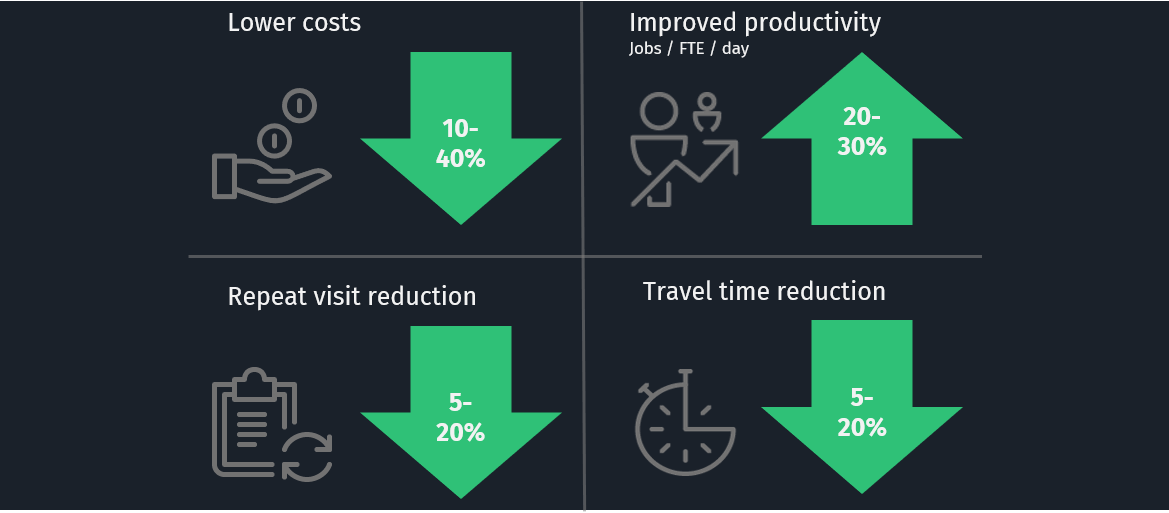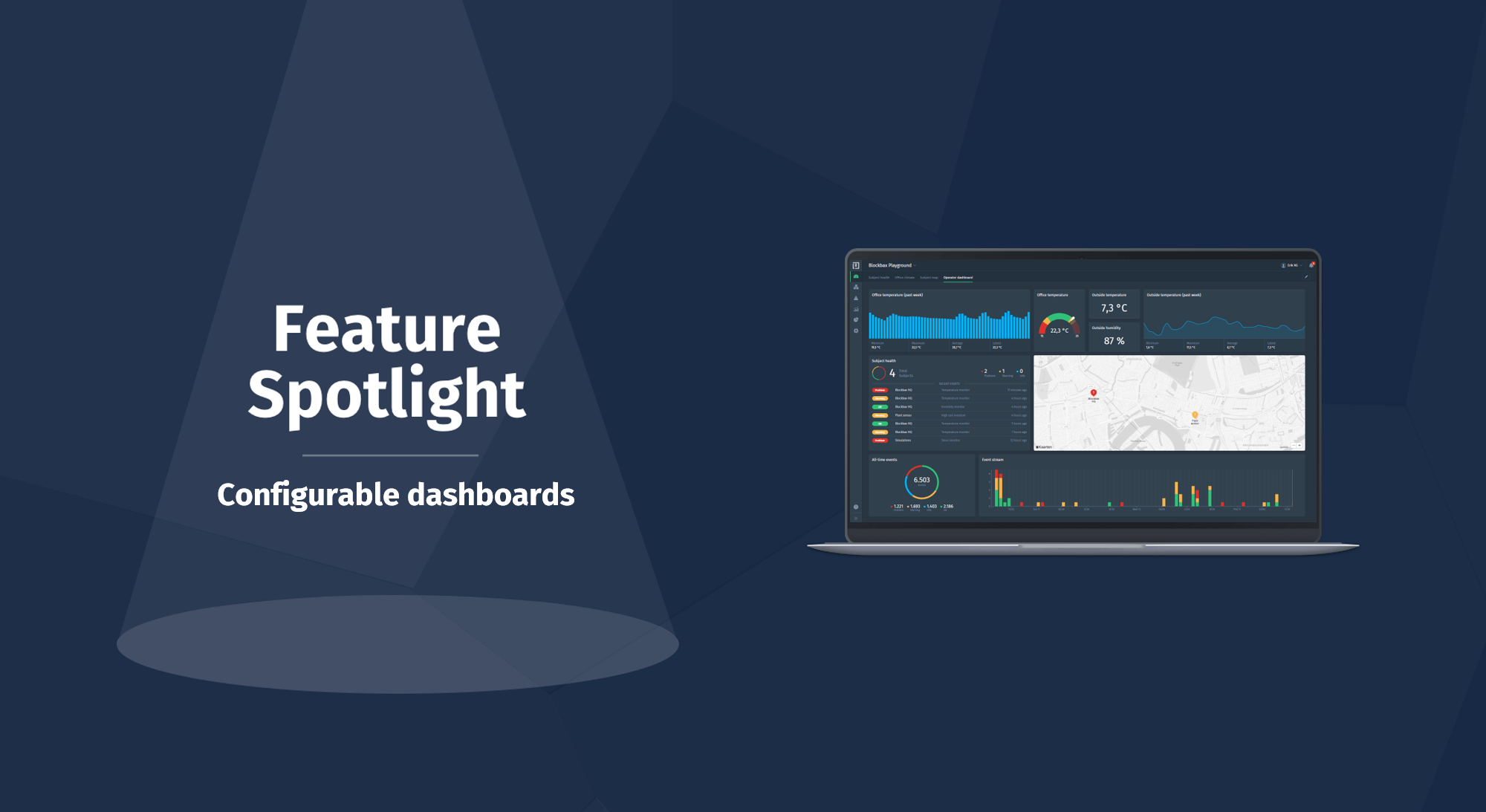April 23, 2020 · 7 min read
From sensor data to competitive advantage - Scattered business rules
Introduction
Before we dive into this blog I’d like to take this opportunity to introduce myself as the most recent addition to the Blockbax family. My name is Michel Vermeer and I’m joining this great company as commercial director. I’m responsible for new business development as well as strengthening the relationships with existing customers. I’ve spent most of my career at Mendix where I, much like the founders, have developed a passion for taming technological complexity and thereby allowing the conversation to fast-forward to where we can add business value.
We speak a lot with companies that are in the midst of exploring the future role of sensors and sensor data for their business. The potential benefits in terms of cost savings of such applications are huge but we see organization’s struggle with scaling IoT solutions from departmental experimentation to company-wide adoption. We’ve had plenty of exposure to successful transformation programs that we’re based around adopting sensor-based solutions and will use this first blog to share our observations and experiences.
Traditional revenue models are breaking
In many industries, we see a shift towards making a variety of business processes ‘smarter’. Customers increasingly expect full transparency from their suppliers and data is a key ingredient for providing this transparency. Maintenance processes for example are changing from periodic maintenance based on a fixed time schedule (or gut feel even) towards maintenance based on the actual condition of the asset. To be able to do so, companies are equipping their assets with sensors and are relying more and more on the data provided by these sensors to determine when and how they need to act. With a probability we’ll have to deal with longer restrictions on our ability to work outside of our homes or offices, the capability to monitor the condition of your assets remotely will become even more important.

Technology advances have led to major performance improvements in field operations.
Source: McKinsey Insights
Out of the shadows
In our experience, a lot of companies are deliberately allowing a somewhat departmental and ungoverned approach to experimenting with IoT applications to explore where and how these could potentially contribute to optimizing their processes. This can range from a ‘DIY’ approach with home-built sensors and Raspberry Pies to buying a point solution that comes with a complete stack (including sensors, connectivity, storage, dashboarding and analytics) for one specific problem.
This is a great way of getting people excited and achieving momentum but this approach results in a fragmented application landscape where a variety of technologies and vendors are used to cover relatively narrow use cases. In our experience, this approach therefore doesn’t form the foundation for rolling out these solutions on a company-wide scale.
From sensor data to cost savings
Whichever way you’re exploring the possibility of IoT applications, you will inevitably have spent time with the people from the business to interpret the data from the various sensors. This could imply e.g. sitting down with a maintenance engineer to discuss what’s happening with an asset if e.g. the sensor data shows that the temperature is slowly going up or if the resistance of a certain capacitor shows spikes. Effectively you’re adding domain knowledge and your business context to your sensor data and are creating business rules for the interpretation of sensor data.
After this type of interpretation has been done you can incorporate these business rules with your operational processes by e.g. only doing maintenance when the asset tells you maintenance is actually needed. This is how acting upon sensor data will result in (significant) cost savings.

The added value of IoT solutions primarily comes from the automation of business decisions.
Source: McKinsey Insights
Scattered business rules
The somewhat departmental approach to experimenting with IoT solutions, combined with your efforts on translating sensor data into actions leads to a situation where all these business rules are scattered over a variety of systems. Furthermore, as the technologies and vendors used can differ from case to case, these rules are not captured in a uniform and structured way. It’s not uncommon in our experience that the way these rules are automated is through hand-written code by a third party that over time will give issues with maintainability and agility.
Lastly, as some providers will provide a full stack for a specific solution, the ownership of these rules as well as the underlying data doesn’t always lie with you as the end-user of the solution but with the provider of the solution.
So what?
So what? You may wonder. At Blockbax, we believe that your ability to fully own and control these rules will become an important driver of your ability to remain competitive. We already highlighted that in the translation from data to operational processes lies the opportunity for increasing your efficiency and driving your costs down.

Will everyone still remember why a certain pattern in your sensor data triggered an operational process?
You will only get the most out of this opportunity when the rules are centrally stored and documented in a uniform, readable and transferable way. The same applies for the interaction between these rules and your processes; in a few years’ time it should still be clear why a certain pattern in the sensor data kicked of an operational process. Furthermore you will need a set-up that allows you to quickly change these rules based on new insights and apply them to the incoming data without dependencies with other teams or development activities.
Stay tuned!
Stay tuned if you recognize the process we’ve described above, in the next blog we will dive deeper into the notion of storing and documenting your business rules for IoT solutions centrally and in a structured manner. We will discuss the importance of a strong and open foundational layer for this to maximize agility and thereby making the most out of the potential competitive advantage.
Cheers,
The Blockbax Team.


